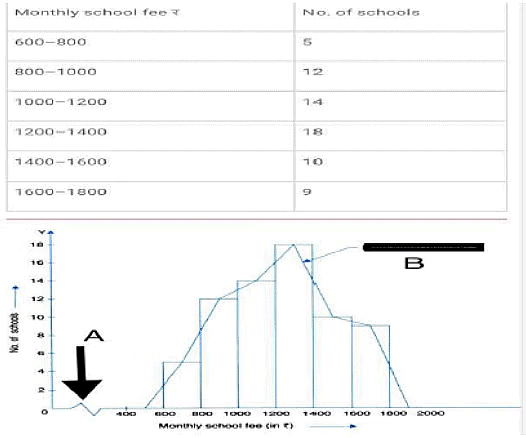Worksheet: Presentation of Data - 2 | Economics Class 11 - Commerce PDF Download
Multiple Choice Questions
Q1: Which of the following method(s) of statistics is followed by collection of primary data in a statistical enquiry?
(a) Classification
(b) Organisation
(c) Presentation
(d) Both (a) and (b)
Q2: Frequency polygon can be drawn
(a) with histogram only
(b) without histogram only
(c) Both (a) and (b)
(d) Neither (a) nor (b)
Q3: The systematic presentation of raw data in row and column is called tabulation.
Choose from the options below.
(a) True
(b) False
(c) Partially true
(d) Incomplete statement
Q4: Horizontal bar graphs are also known as
(a) Complex bar graph
(b) Simple bar graph
(c) Derived bar graph
(d) None of these
Q5: General purpose table is also referred to as
(a) Repository table
(b) Original table
(c) Both (a) and (b)
(d) Neither (a) nor (b)
Q6: Accuracy is not required while drawing the diagrams. Choose from the options below.
(a) True
(b) False
(c) Partially true
(d) Incomplete statement
Q7: Which of the following is/are part(s) of a table?
(a) Stubs
(b) Captions
(c) Title
(d) All of these
Q8: Which of the following are methods of presentation of data?
(i) Text presentation
(ii) Semi-tabular presentation
(iii) Tabular presentation
(iv) Pictorial presentation
Choose from the options below.
(a) (i), (ii), (iii)
(b) (ii), (iii), (iv)
(c) (i), (iii), (iv)
(d) (i), (ii), (iii), (iv)
Q9: On the basis of construction, which of the following are types of table?
(a) Simple table
(b) Complex table
(c) Derived table
(d) Both (a) and (b)
Q10: The main part of table is known as
(a) Body
(b) Heading
(c) Footnote
(d) None of these
Q11: Histogram always starts from the origin.
Choose from the options below.
(a) True
(b) False
(c) Partially true
(d) Incomplete statement
Q12: The most accurate mode of presentation for comparison and computation is the ____ .
(a) diagram
(b) table
(c) text
(d) All of these
Q13: A simple bar graph can be drawn
(a) vertically
(b) horizontally
(c) Both (a) and (b)
(d) Neither (a) nor (b)
Q14: Tabulation makes the data complex.
Choose from the options below.
(a) True
(b) False
(c) Partially true
(d) Incomplete statement
Q15: Which of the following is/are essentials of a good classification?
(a) It should comprised of all the items of the population
(b) It should be simple and clear
(c) It should be comprised of all related instruction of understanding
(d) All of the above
50 students were asked to choose their Favourite sport these are the results. 
The data is to be illustrated in a pie chart.
Q16: In which form a data presented in a pie diagram?
(a) percentage
(b) Degrees
(c) Absolute values
(d) table
Q17: What angle should be used for football.
(a) 36̊
(b) 72̊
(c) 90̊
(d) 10̊
Q18: What angle should be used for tennis.
(a) 8̊
(b) 57.6̊
(c) 28.8̊
(d) 64̊
Q19: In a pie diagram/circle 1% is equal to ____.
(a) 1
(b) 3.6
(c) 36
(d) 10
Answer the following questions based on the histogram Given below.
Q20: Which group contains maximum monthly school fee?
(a) 1000-1200
(b) 1200-1400
(c) 1400-1600
(d) 800-1000
Q21: What A denotes in the above diagram.
(a) Jagged line
(b) horizontal line
(c) Broken line
(d) Both A and C
Q22: How many schools charge monthly school fee between 1200 to 1800?
(a) 44
(b) 37
(c) 42
(d)18
Q23: A --------------------- becomes a ----------------- if we Draw a line joining mid points of the tops of all rectangular.
(a) Histogram, Frequency polygon
(b) Frequency polygon, Histogram
(c) Frequency ,Histogram
(d) Histogram, Frequency distribution
Long Answer Type Questions
Q1: Define or explain briefly.
(a) Statistical Table
(b) Tabulation
(c) Time series
(d) Pie Diagram
Q2: Name 4 types of presentation
Q3: Give 2 object of Presentation
Q4: Ogives are also know as
Q5: Discuss the following :
(a) Objectives of Tabulation
(b) Parts of a Table (with diagram)
(c) Type of Tables
(d) Importance of graphs and diagrams
(e) Various types of one dimensional diagram
(f) Limitations of Diagrammatic Presentation
(g) Point to keep in mind while preparing a table.
Q6: Differentiate between:
(a) Graphs/ Diagrams
(b) Stub /Caption
(c) Subdivided/ Percentage Bar diagram
(d) Deviation /Broken Bar Diagram
Q7: How will a histogram be drawn if
(a) Class intervals are uneqnal
(b) Class intervals are inclusive
Q8: Give alternative terms for
(a) Multiple Bar Diagram
(b) Angular Diagram
(c) Sub-Divided Bar Diagram
(d) Time Series
You can access the solutions to this worksheet here.
|
59 videos|222 docs|43 tests
|
FAQs on Worksheet: Presentation of Data - 2 - Economics Class 11 - Commerce
| 1. What is the importance of presenting data effectively? |  |
| 2. What are some common methods for presenting data? |  |
| 3. How can one ensure the accuracy of the presented data? |  |
| 4. How can data visualization enhance the understanding of data? |  |
| 5. How can one choose the most appropriate method for presenting data? |  |





















